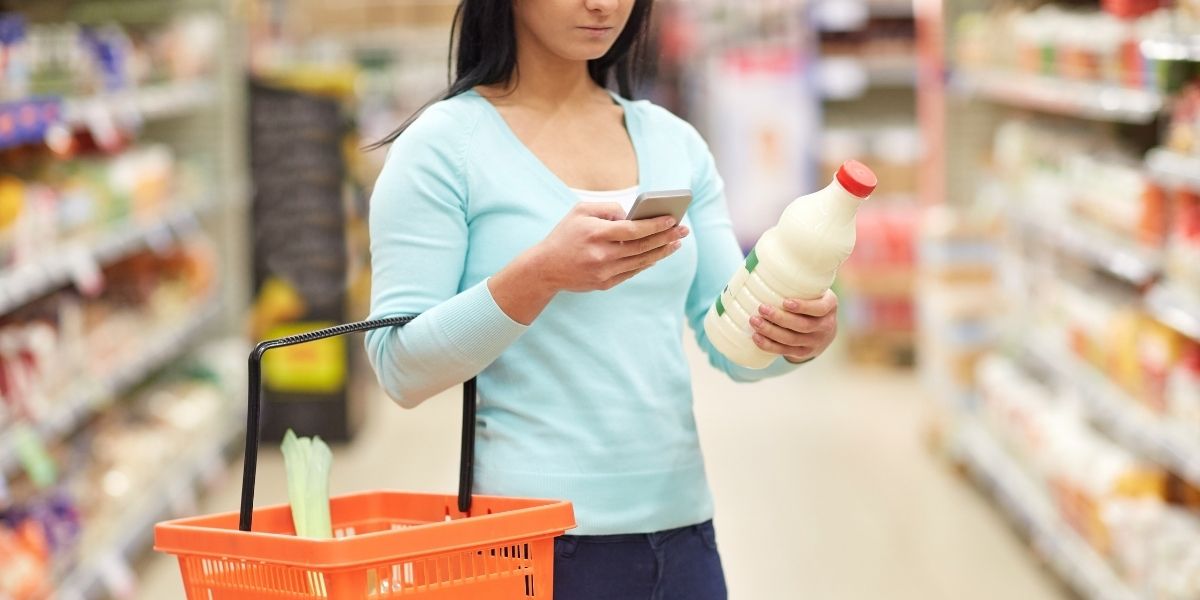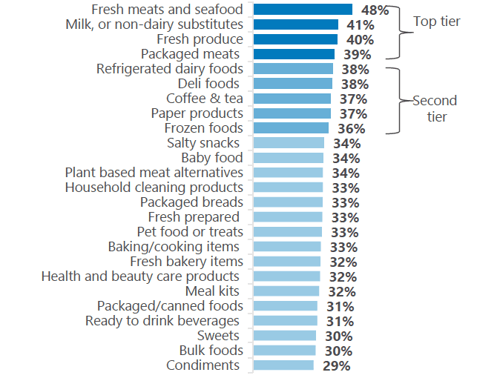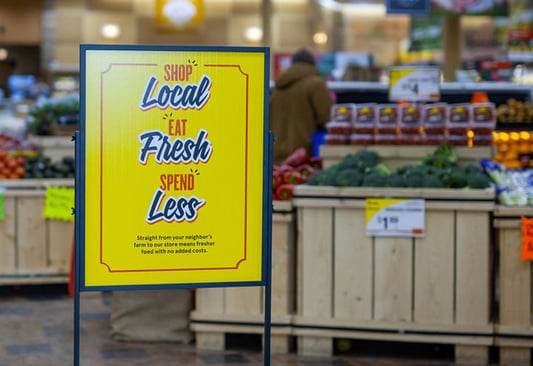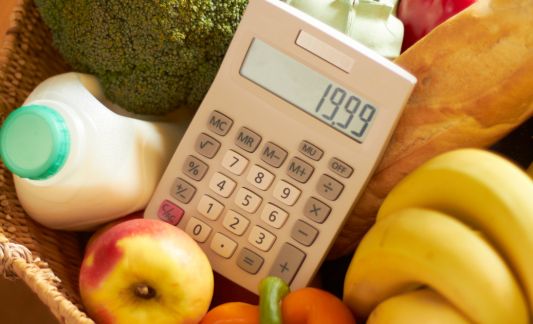Help Isom IGA recover from devasting floods

4 min read
FMI's Shopper Trends Reveal Inflation Is Changing Shopper Behavior
Written by Jessica Vician
May 5, 2022
In the last two years there have been a lot of things for shoppers to be concerned about: civil unrest, COVID-19, out of stocks. Now inflation joins the list. According to the latest U.S. Grocery Shopper Trends 2022 report published by FMI–The Food Industry Association, 53 percent of shoppers list rising prices as their top concern.
The shift in shopper concern from COVID to pricing foreshadows changing behavior, and therefore an opportunity for independent grocers. "Coming out of COVID, national studies show that shoppers' patience is wearing thin because they feel they're increasingly paying more for lower quality services," says IGA CEO John Ross. "It's playing well to the grocery business—they don't want to dine in a restaurant with poor service and high prices. If you’re a high-service retailer and you can deliver quality in an environment where everyone else cannot, you’re at a huge advantage.”
What does quality and value look like during an inflationary period? "Independents do quality best," Ross says. "It's your local, fresh foods that keep families fed and healthy. It's your skilled butcher behind the counter who delivers the highest quality cuts of meat for the price. It's the content you're sharing on social media and on IGA.com that offers tips for stretching their budgets."
Let's break down the key findings from the report, see how they will impact the independent sector, and what shoppers need from their grocers in inflationary times.
Shoppers Are Spending More
With 59 percent of people saying they spend more on groceries than they did a year ago, shoppers are noticing what costs more and are beginning to adjust what goes in their carts.
Nearly half of fresh meat and seafood consumers say they now spend more due to rising prices on those items. Milk, fresh produce, and packaged meats are close behind in perceived price increases, as noted in the chart below.
As these categories are among the most purchased by consumers, when prices increase in these categories, grocery bills increase, too. Some shoppers recognize that those rising grocery bills are replacing restaurant bills, with 17 percent admitting to eating out less, and some choosing to buy higher quality items from the grocery store.
ITEMS WHERE PRICES HAVE INCREASED AMONG CATEGORY BUYERS

Source: FMI U.S. Grocery Shopper Trends 2022
Low- to Middle Income Shoppers Are Most Affected
According to the report, consumers who make less than $75,000 a year are the most concerned about price increases (57 percent), and those making less than $25,000 a year are especially concerned about having enough money to pay for food (41 percent).
"The best way for retailers to meet these shoppers' needs are to know their demographics and tailor their category offerings to those demographics," says Ross. For example, if you have a high number of SNAP recipients, boost your private label offerings and arrange your visual merchandising to draw attention to those value buys.
Deal-Seeking Is Accelerating
86 percent of concerned shoppers are making changes to their grocery shopping behavior. They're on the hunt for deals and alternative products, like private label or other less expensive swaps, with 59 percent say they are frequently seeking promotions and 31 percent say they will “buy only when on sale.”
Beyond sales and offers, the most popular tactic is swapping higher priced items for lower priced alternatives. According to FMI, shoppers making less than $40,000 a year report buying less fresh meat (31 percent) and produce (23 percent) and instead are buying frozen meat or canned produce, along with private label (35 percent).
Independents can help those shoppers by communicating the value and quality that they're offering.
"We strongly encourage our retailers to take advantage of the National Digital Ad offers provided by our manufacturing partners," says IGA Vice President of Business Partnerships Heidi Huff. "All they need to do is put up the shelf signs we email to them every other week, add the offers to their POS systems, and their deal-seeking shoppers will flock to those offers."
Ross adds, "We're also buying digital advertising on your behalf to encourage shoppers in your area to go into your stores, but we need you to help drive shopper awareness by calling out the deals in your stores and on social media."
In addition to product offers, retailers can demonstrate their value through online content that helps shoppers spend smartly. IGA.com has shopper recipe blogs designed to maximize their grocery budget, like How to Make 3 Meals With 1 Rotisserie Chicken or 10 Ways To Stretch Your Grocery Budget. Sharing this content with your shoppers shows them that you're their partner through this period.
Loyalty Remains Strong
Retailers who attracted local shoppers during the early pandemic and kept them throughout are in luck. Shoppers are continuing to use their go-to grocery stores as we emerge from the pandemic.
"Shoppers believe that a store that buys locally has a better product and saves them money, which is an enormous advantage for our stores right now," Ross says. "The power of local and the power we have as independents will allow us to help our shoppers feel confident that there is someone looking out for them."
Ross says retailers must communicate their value to shoppers.
"Now is the time for our independent retailers to leverage the relationships they have cultivated with their shoppers throughout the pandemic," he says. "We are much better positioned than our competition to serve our shoppers through inflation, as long as we approach it from the lens of value—we must visually demonstrate value."
IGA's inflation sign kit can also help demonstrate the value you're offering. Signs link to cost-saving recipes for family meal planning (like home recipes for their favorite restaurant meals; casseroles for quick, inexpensive, and hearty meals; and videos that show them how to use one protein source for multiple meals). The language and images remind shoppers that food that comes straight from their neighbor's farm is fresher, with no additional costs; that their money stays in the community when they shop their local independent grocer.

There's no way around it—inflation is here for the foreseeable future, and shoppers are concerned about rising prices in their carts. But with the insights gained from FMI's U.S. Grocery Shopper Trends 2022 report, independent retailers can take informed action to help their shoppers find value, from an assortment favoring frozen foods and private label to more in-store and online promotion of National Digital Ad offers.
Previous Story
← 3 Steps To Cleaning Category Success
You May Also Like
These Stories on Inflation
Sep 13, 2023 12:17:45 PM |
3 min read
May 31, 2023 12:44:20 PM |
3 min read
Mar 15, 2023 2:51:52 PM |
1 min read



No Comments Yet
Let us know what you think